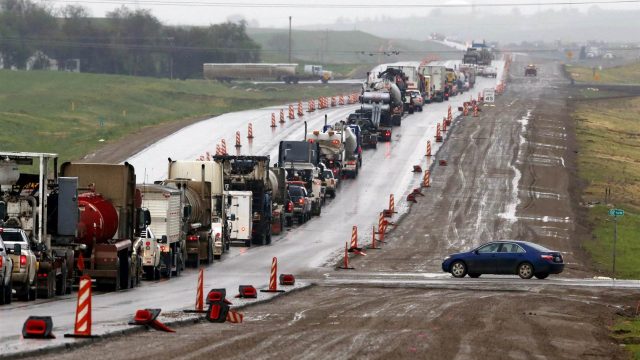Despite Oil Boom North Dakota's Traffic Fatality Rates Have Changed Very Little

“N.D. traffic deaths top 100 this year, on pace to exceed 2014,” reads a headline over a Mike Nowatzki article in the Bismarck Tribune.
“With three and a half months to go in 2015, North Dakota has recorded more than 100 traffic fatalities and is on pace for one of the deadliest years on the state’s roadways in recent history,” writes Nowtazki.
That’s not good, but raw traffic fatality numbers don’t really tell us a lot about traffic safety, because they’re not put into the context of the amount of traffic on the roads. So really Nowatzki has no basis for telling us that 2015 could be one of the deadliest years in state history, because we’re missing an important piece of data.
Will 2015 an up year or a down year for traffic safety? We won’t really know until we have the fatality count and the number of vehicle miles traveled.
Let me show you why that matters using data from the North Dakota Department of Transportation’s most recent crash report with data through 2014 (see below).
This cart shows us the raw number of traffic fatalities in the state by year contrasted (the 2015 number is to date) with the number of vehicle miles traveled (through 2014, the last year for which data is available). As you can see, the more traffic we have on the roads the more fatalities we have as well:
So yes, we have seen some real spikes in traffic fatalities over the last decade, particularly during the Bakken oil boom years when traffic on our roads soared. But the fatality rate – the number of fatalities per million of vehicle miles traveled as reported by the DOT – has remained largely static. In fact, during the peak oil boom years of 2014 – 2013 the state had a traffic fatality rate that was actually lower than the rate in 2005:
It’s hard to look at what is essentially a flat trend line for traffic fatality rates and complain too much about traffic safety in the state despite the big headlines. But the media does love its sensational headlines.
Back in March of 2014 the Associated Press was claiming a 350 percent increase in North Dakota’s traffic fatality rate, but they were fatalities in the context of the state’s population growth. Which doesn’t really make any sense for a couple of reasons:
- Population counts have been notoriously inaccurate during the oil boom, with most agreeing that they underestimate actual population numbers significantly.
- Population as a metric isn’t the same thing as actual traffic on the roads.
If we keep traffic fatalities in the context of the amount of traffic on the roads, the fatality rates in the state have actually changed very little over the last decade. Which, frankly, is a testament to a job well done by the state’s transportation and law enforcement officials.






